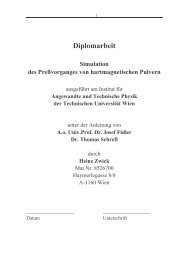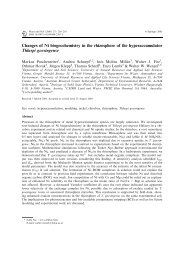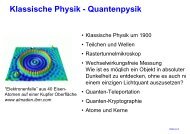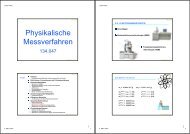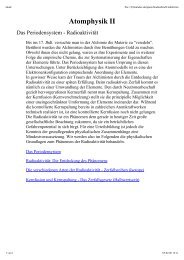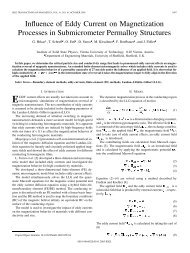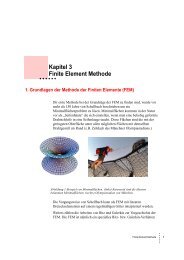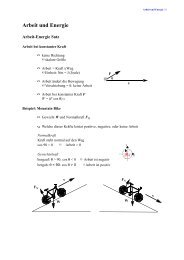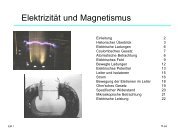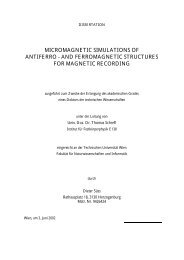Read Back Signals in Magnetic Recording - Research Group Fidler
Read Back Signals in Magnetic Recording - Research Group Fidler
Read Back Signals in Magnetic Recording - Research Group Fidler
You also want an ePaper? Increase the reach of your titles
YUMPU automatically turns print PDFs into web optimized ePapers that Google loves.
FEM Simulations<br />
<strong>Magnetic</strong> Material Js [T] K1 [J/m 3 ] A [J/m] Hex [T] Α<br />
Free Layer 1 0 1.3E-11 0 0.1 *<br />
P<strong>in</strong>ned Layer 1.885 0 1.2E-11 0.05 *<br />
0.1 *<br />
Hard Bias 1 2.5E5 1.3E-11 0 0.1 *<br />
Shields 1 0 1.0E-11 0 0.1 *<br />
Table 6.1: The values of the spontaneous polarization, the anisotropy constant, the<br />
exchange constant, and the antiferromagnetic exchange coupl<strong>in</strong>g field, and the Gilbert<br />
damp<strong>in</strong>g constant, which are assumed for our magnetic model. The asterisk-marked values<br />
are valid unless otherwise noted.<br />
6.1.2 Conductor Model<br />
For the current model we have to consider all conductive parts of the model. This also<br />
<strong>in</strong>cludes the antiferromagnet or capp<strong>in</strong>g layers. The conductor model is shown <strong>in</strong> Figure 6.2.<br />
However, only the most important layers are taken <strong>in</strong>to account for our simulations. So we<br />
neglect the th<strong>in</strong> capp<strong>in</strong>g layers, although they make a m<strong>in</strong>or contribution to the conductance.<br />
Thus our conductor model conta<strong>in</strong>s the free layer, p<strong>in</strong>ned layer, nonmagnetic spacer layer<br />
(Cu), the antiferromagnetic layer, and parts of the leads.<br />
Figure 6.2: The FEM conductor model is shown. This simplified model shows the four<br />
ma<strong>in</strong> layers of a GMR element, which contribute most to the conductance: The free layer<br />
(dark blue) the nonmagnetic Cu layer (orange), the p<strong>in</strong>ned layer (light blue), and the<br />
antiferromagnet (yellow). Additionally the high conductive leads (p<strong>in</strong>k) are shown.<br />
x<br />
y<br />
z<br />
67



